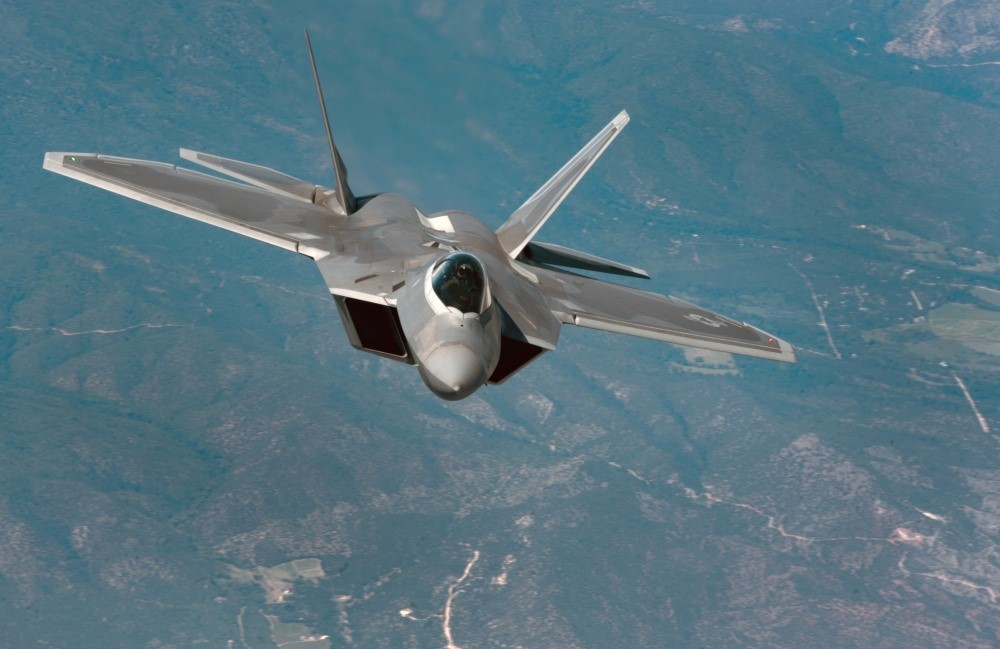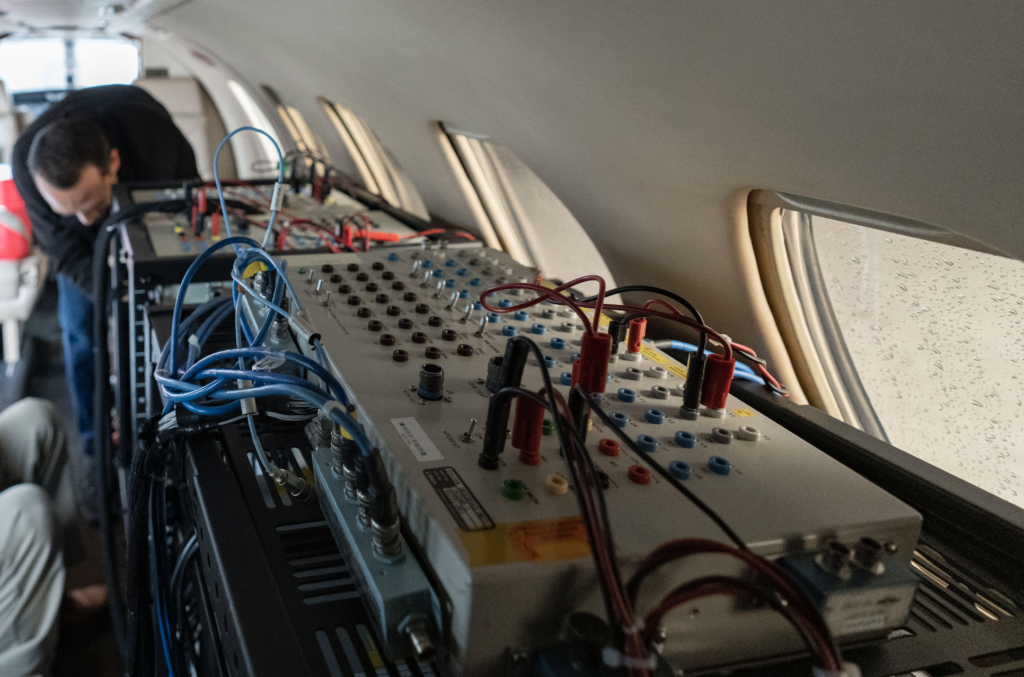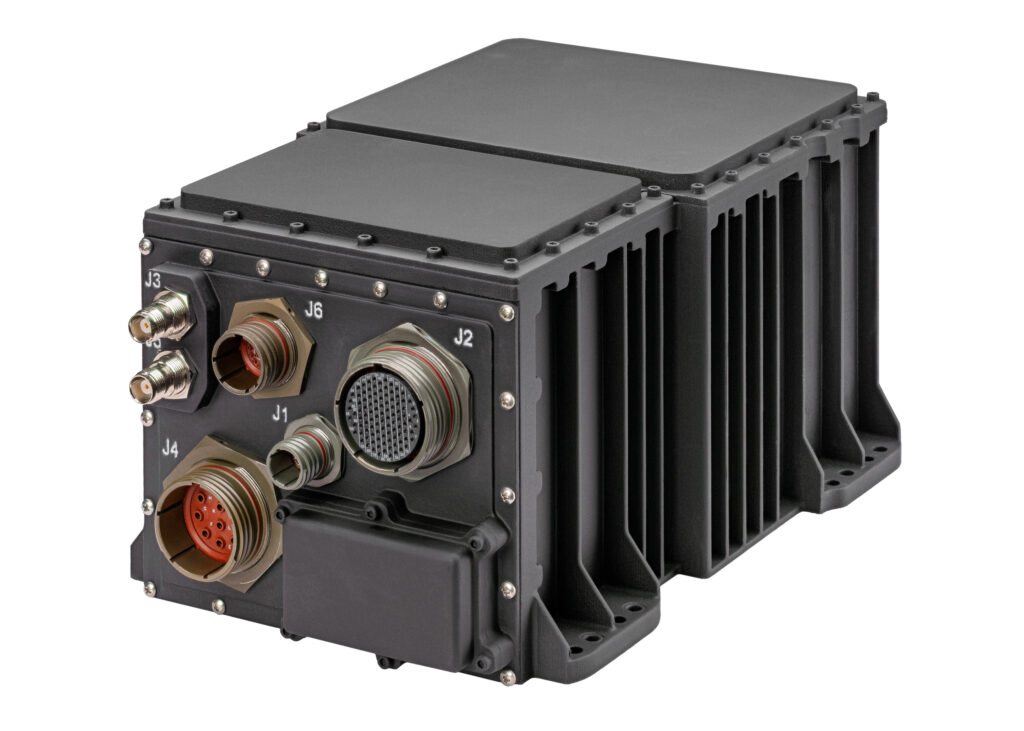Northrop Grumman Conducts EGI-M Flight Test


Northrop Grumman recently conducted a flight test of EGI-M, its advanced airborne navigation solution. (Photos: Northrop Grumman)
Northrop Grumman Corporation recently completed a flight test of its advanced navigation technology, known as Embedded Global Positioning System (GPS) / Inertial Navigation System (INS) Modernization, or EGI-M. Notably, this test marked the first in-flight evaluation of the system with an integrated M-Code capable receiver. This specific technology aims to facilitate missions in environments where GPS access is either compromised or entirely unavailable.
The EGI-M program is engineered to provide rapid and reliable positioning, navigation, and timing data. It is expected to feature a modular platform interface that should ensure easy integration with existing navigation systems on various platforms. This modular approach will also accommodate future hardware and software technological upgrades.
The U.S. Air Force awarded Northrop Grumman a $59 million engineering and manufacturing development contract in early 2019 for its EGI-M technology. This followed a $49 million development contract awarded in 2017.
This latest flight test utilized the M-Code capable LN-351, which met performance benchmarks comparable to its predecessor, the LN-251 INS/GPS system that uses modern fiber optic gyro technology. Northrop Grumman is targeting the E-2D Advanced Hawkeye and the F-22 Raptor as the inaugural platforms for this navigation system. Furthermore, multiple fixed-wing and rotary-wing platforms within the Department of Defense and allied forces have already selected EGI-M as their go-to solution for future navigation requirements.

“This flight test is a major step forward in developing our next generation airborne navigation system. The EGI-M capability developed by Northrop Grumman enables our warfighters to navigate accurately and precisely through hostile and contested environments.” – Ryan Arrington
With the critical design review completed back in 2020, this successful flight test represents a significant milestone for the EGI-M program. It suggests robust capabilities for the technology in providing resilient and adaptive navigation solutions for military applications.
Ryan Arrington, vice president, navigation and cockpit systems at Northrop Grumman, shared his thoughts in an interview with Avionics International. He emphasized the company’s long-standing expertise in assured position, navigation, and timing across multiple domains—from undersea to outer space.
Arrington described the EGI-M platform as the next evolutionary step in their state-of-the-art fiber optic gyro-based airborne navigator product line. Integrating M-Code, or military GPS, is a crucial advancement that will add resilience to missions in contested or GPS-denied environments.
He remarked, “We will also be certifying the equipment to the current FAA airworthiness standards. That is an important requirement for our military customers going forward.” The ultimate aim, he stressed, is to empower military operators to accomplish their missions securely and return home safely.
Also participating in the interview with Avionics was Patrick Young, operating unit director at Northrop Grumman. He underscored the significance of the May flight demo for the EGI-M program. The company had been working extensively on the engineering and manufacturing development (EMD) phase, focusing on hardware, software, and firmware. “While we have simulators, and we can do dynamic testing in a simulated environment in our lab, really demonstrating and validating the performance of all three of our navigation solutions in a more representative and real-world dynamic environment is a key program objective in 2023,” Young explained.
Conducted over three days in a Cessna Citation from Van Nuys Airport in Southern California, the flight tests involved multiple scenarios, including fault injections and robustness testing.
Young highlighted the EGI-M’s multiple independent navigation solutions: GPS-only, inertial navigation-only (INS), and a hybrid using Kalman filters. All three were successfully demonstrated during the tests. Young also mentioned that raw performance data captured will be valuable for future analysis and refinement of the system.

Launch platforms for the EGI-M are the E-2D Advanced Hawkeye and the F-22 Raptor.
The results were encouraging enough to be presented at the 2023 Joint Navigation Conference in June. Young emphasized the modular and model-based architectures that allow the system to adapt quickly to internal corrections or emerging external threats, emphasizing the system’s readiness for the next phases of development and deployment.
Young discussed how M-Code technology enhances security and reliability in comparison to other GPS technologies. “It represents the next phase of military technology in GPS types of solutions,” he said. “So it’s more robust [and resistant] to threats and to jamming.”
He noted that Northrop Grumman has joint roadmaps with customers for integrating the system with current platform navigation systems. “We’ve been in an EMD phase for several years now, building hardware, stabilizing software, maturing software, and essentially getting ready for a platform integration,” he said. “We have deliveries to our customer planned. We’ve worked specifically with them to plan for mid-2024 for initial integration and lab use, and in production representative hardware into 2025.”
—————
Boost Internet Speed–
Free Business Hosting–
Free Email Account–
Dropcatch–
Free Secure Email–
Secure Email–
Cheap VOIP Calls–
Free Hosting–
Boost Inflight Wifi–
Premium Domains–
Free Domains





